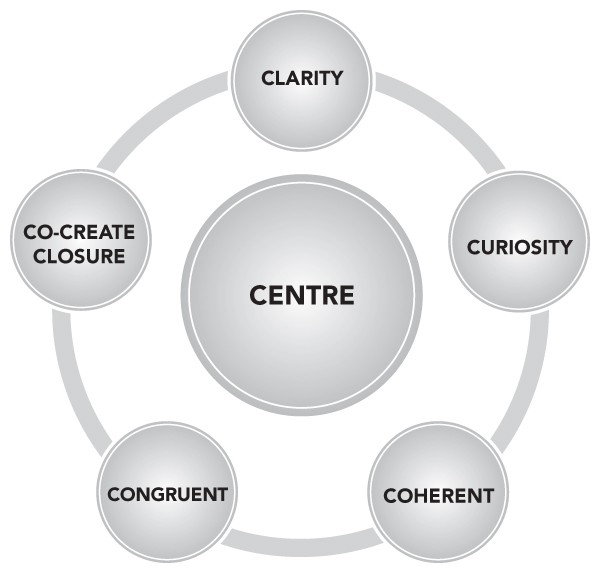
by Julia Felton | Nov 22, 2017
According to the 2015 Employee Trends Report by Quantum Workplace, one of the biggest areas of concern for team members is that there is often not open and honest communication with managers. So why is this? Why does miscommunication pervade at least 50% of business conversations? Is technology to blame or are there some other dynamics at work.
In my experience, yes technology does have a part to play. Emails and text can be taken out of context and without any supporting body language to back up the conversation they can fuel anxiety and in some cases, escalate beyond repair, this is why face to face conversations are so much more effective.
And yet face to face conversations too can lead to miscommunication especially when the manager fails to lead the conversation or is fearful about discussing the subject. Take for example if a manager needs to have a difficult conversation with team members, say about their performance. If the manager is not feeling confident in having the conversation they might not articulate clearly the problem and so the team member leaves confused about what they have done wrong. This then causes the situation to escalate and before long both parties become frustrated. I call these conversations Courageous Conversations as they require the manager to be ruthlessly honest and transparent, often saying things that no-one has said in the past.
Having a clear framework for navigating these Courageous Conversations is essential to help managers approach the situation with confidence and certainty. This is why I developed the 6 C’s to Successful Courageous Conversations Framework.
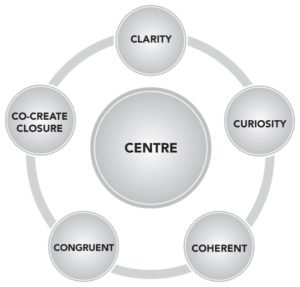
Throughout any Courageous Conversation, it is imperative that you manage your emotional energy. If as the leader of the conversation you are grounded and in the moment it will help the person you are talking to remain in this state too. Make sure you breathe deeply, stay calm and stay centered in your energy. Notice if you go off track and re-calibrate if necessary.
Step One: Clarity
Be clear on the reason for the conversation and the desired outcome. Most courageous conversations falter because there is a lack of clarity about the real issue. Get to the root cause of the problem and address this rather than focusing on the symptoms
Step Two: Curiosity
Cultivate an attitude of discovery and curiosity. Pretend you don’t know anything and learn as much as you can about the other person’s point of view. Watch their body language and listen to what they are not saying as well as what they are saying. Don’t interrupt, unless to clarify, and let the person talk until they are finished.
Step Three: Coherent
Make sure that you have heard and understood everything that has been said by repeating back to them what they said. This will ensure the team member feels that they have been listened to
Step Four: Congruent
When the team member has said everything, then share with them how you see things from your perspective. Help them see your position without undermining their own. Seek clarity on how the team member came to that conclusion and how it differs from your own stance.
Step Five: Co-Create Closure
Now you both understand each other’s point of view it’s time to co-create a solution. Brainstorm and come up with ideas that you both think might work. Find something the team member says that resonates with the solution you desire and build on this. If the conversation at any time becomes adversarial go back to inquiry and further clarification on their point of view. The more the team member feels listened to the more they will engage in co-creating a solution with you.
Remember, that for any situation you encounter there are always multiple perspectives, so be empathetic of the other person. Always be curious about how they see the situation and be aware of how your own judgments and prejudice may be impacting what you are observing. When you appreciate, that others have a different perspective from you and you can start to see things through their eyes, you are able to make more informed decisions, and in doing so increase team member engagement.
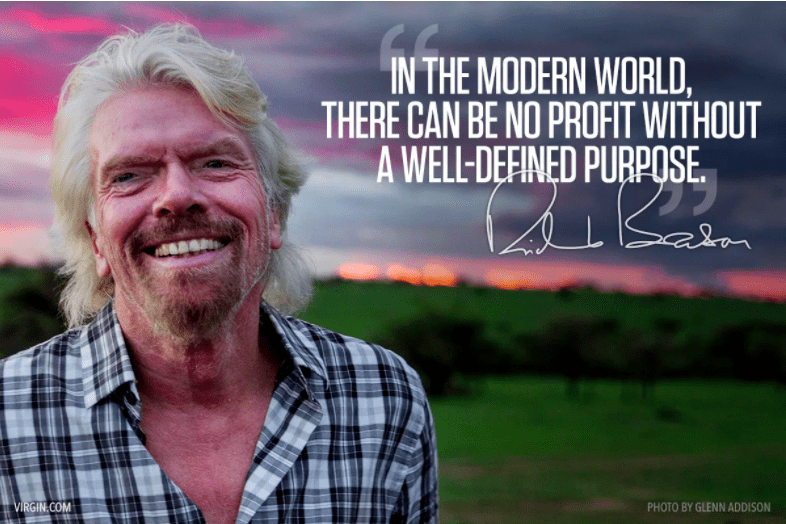
by Julia Felton | Oct 26, 2017
Purpose has moved to the centre stage in business. It is the glue that keeps organisations aligned and in flow. It connects business owners and leaders with team members and ultimately their customers. It enables business growth as everyone knows what the business stands for and where it is heading. Team members and customers are attracted to businesses that are seeking to be change makers and make a real difference in the world, and so engagement levels increase. That’s the power of an Engaged Purpose.
Let’s be clear purpose is something more profound that corporate social responsibility (CSR). Purpose provides a road map and the opportunity to think much bigger about the impact you and your business are making in the world. It is about so much more than recycling, finding ethical suppliers or recognising the negative effect your business is having on the environment.
So what is an Engaged Purpose?
It is a written statement that clearly communicates to your team what your company does and why. It details the transformation you are trying to create. It provides a structure and framework that will inspire your team to align their daily activities with your company’s larger aspirations.
Purpose is often confused with vision and mission, but they are not the same. Visions, which can be defined as preparation for the future often tend to be factual and so don’t appeal to people’s emotions. Whilst missions tend to describe any work that we believe it is our duty to do. Many visions and missions are too broad in scope and so fail to resonate with team members.
A great purpose always answers the question Why. Why are we doing this? This question gets team members, customers and all the other business stakeholders to become engaged in the business. It motives them to find the answer to How the business achieves this solution. A compelling purpose touches the heart rather than the mind. It provides the road map where all stakeholders feel that they are making a contribution to the organisation’s success, and so fulfils Maslow’s third hierarchy of needs which is comradery and positive relationships
Common Mistakes To Avoid When Crafting Your Purpose
Mistake # 1. Written for the wrong audience.
Many purpose, mission or vision statements are written for the organisation’s customers. This is wrong. Most customers don’t care – they choose to deal with you for reasons other than some words about why you exist and what you do. The people who matter here are your team. Write your Purpose for them, to engage them, and Engaged Customers will become a by-product. (But do write it knowing that customers may read it, too.)
Mistake # 2. Disconnected from the team and confused with vision or mission.
Purpose should not be confused with vision – which can be defined as “preparation for the future,” or mission – which might be described as “any work we believe it is our duty to do.” Certainly both have value, as they are all crucial to your business’ growth and success. =In our experience, however, visions and missions often don’t fully resonate with the teams that are tasked with achieving them (see Mistake #1).
“Purpose-driven organisations are believed to have better results across a variety of measures, with 89% of participants saying they encourage greater employee satisfaction, 85% better customer advocacy and 81% higher quality products and services.” – EY (formerly Ernst and Young)
Why an Engaged Purpose is Important?
In a study of employees at various companies, EY found that a staggering 87% of respondents believe companies perform better over time when they have a purpose that goes beyond profit. Additionally, EY found a great purpose resulted in:
• 85% BETTER CUSTOMER ADVOCACY
• 89% GREATER EMPLOYEE SATISFACTION (great news, if you’re looking to reduce staff turnover)
• 81%HIGHER QUALITY AND SERVICES
There was another standout figure: only 37% of respondents said their company’s business model and operations were well aligned with its purpose. Imagine what would be possible if more team members became aligned and engaged with the business purpose? Increased productivity, profitability, happier employees, more innovation and creativity and just some of the results.
If you’d like to learn more about The Power of Purpose To Ignite Extra-Ordinary Performance join me for a free workshop being held as part of York Business Week.

by Julia Felton | Aug 9, 2017
“Proper Planning Prevents Poor Performance”
If you ask many business owners and leaders what creates success many will allude to the fact that planning is key, but this is just one of the 5 P’s of business success. Instinctively, many business owners also understand the concept of alignment but what does this really mean. In my conversations with my clients they usually give one of the following definitions.
- “our core purpose, values and mission are aligned with our goals” or
- “our people understand our values and are aligned with our purpose.”
However, having an aligned business is much more complex than this. Its not just about purpose and people, although that is a great start. You need to ensure you have aligned the other P’s too. This is an area that far too many businesses overlook and yet it can have a massive impact on the ultimate success of the business.
So what are the 5 P’s that impact business today – and these are not the traditional 5 Marketing P’s espoused by Philip Kotler of product, price, place, promotion and people, but rather:
- Purpose
- Plans
- People
- Processes
- Playground
Purpose: Few people will argue that having a clear purpose is imperative to a businesses’ success, but now more than ever team members and consumers are demanding that companies start walking the talk and recognise the impact they are having on the environment.
In a recent study by Cone Communications 70% of people consider the social and environmental impact when deciding where to work and 83% of millennials said they would be more loyal and work harder for a purpose driven organisation that is making a real difference in the world and where they feel they are making a contribution. Furthermore 87% of US consumers said they would rather purchase a product because a company advocated for an issue they cared about.
You can take the purpose test here to find out which of the 17 Sustainable Development Goals you are most closely aligned with
Plans: Having a great purpose that inspires and motivates is just the first step. This purpose then has to be translated into a vision, values and strategy that the entire team can get behind. The purpose will shape the strategy ensuring that the business only pursues activities that align and are congruent with its purpose.
A great example of this is Larry Merlo, the President and CEO of CVS Caremark, a chain of US pharmacy stores, who took the bold decision in 2014 to end the sale of cigarettes in more than 7,600 stores as the sale of tobacco products was inconsistent with the company’s purpose of helping people on their path to better health.
People: Richard Branson, Zappos, Unilever and Whole Foods are examples of companies that have made a solid commitment to focus on their purpose, and ensure that through hiring people for attitude rather than competence that they create a culture where the entire team is aligned with the values of the company. Zappos hold the mantra of Hire Slow, Fire Fast as they recognise that if a team member is not committed to their organisation they can be divisi, so the company would rather pay that team members a month’s salary to leave, rather then experience the problems that ensue from disgruntled and dis-engaged team members.
The people agenda, when not fully congruent, can derail the best strategic alignment plan. Do all the touch points of training – hiring, on-boarding, training, leadership development, continuing education – enable your company to fully achieve your goals? Are there areas where this is shortchanged? Will the full execution of your training plan realise your company mission?
Processes: In today’s VUCA world it is essential that business can act in an agile manner. This means that systems and processes need to be flexible to adapt to the myriad of changing situations that leaders and team members find themselves in.
Leaders need to ensure that the work processes and flowcharts are tied into the company purpose? For example, if your company wants to give the best customer experience, is every customer interaction streamlined, or are they bogged down with layers of checks and balances that hinder this goal? Check each and every process constantly to ensure that it works optimally like a well-oiled machine, and supports the team in achieving their goals, rather than hindering the process.
Playground: Playground is the term I use for the internal business environment made up of both the physical space and also the business culture. Do both of these aspects support the growth of the business aligned to its purpose? Is the culture in the business one of blame or do team members take responsibility and are they encouraged to make decisions?. In my experience when team members are working in fear of the consequences of what they do they fail to step up, take decisions and generally abdicate responsibility for what is happening. This can lead to silo group forming who consciously or unconsciously seek to derail the business for their own personal gain.
Getting all these 5 P’s aligned and congruent is imperative for the success for the business, and whilst when one or two are off a bit, the business can still flourish, it is my experience that a business never fully gets into flow until alignment has occurred in all these areas.
Take the analogy of driving a car. You can drive it when one or two of the wheels are misaligned, but the drive is not as smooth, it takes more effort and you use up more gasoline making driving the drive more expensive, both now and in the future.
There are considerable benefits of creating an aligned organisation, as you create a business where no time, energy or resources are wasted. And the result to the business are the 3 P’s of successful alignment:
- Performance
- Productivity
- Profitability
and what business would not want to achieve that.
I encourage you to examine what areas of your businesses are mis-aligned and not supporting your company purpose, and then work on bringing them back into alignment.
And of course if you need any assistance please feel free to connect with me and lets have a conversation to explore what is possible for your business because the result of creating an aligned business is considerable and will help your business stand out above the rest.

by Julia Felton | Mar 28, 2017
We all have to make difficult and challenging decisions throughout our life and these decisions often impact the future direction of our lives. Questions such as: Where do I live? Who should I marry?. These are life-changing decisions.
In business, too, we have to make strategic decisions all the time. Should we launch this programme or that programme? Should I enter into a joint venture with this person or that person? Enter this market or that one? These decisions can impact the success or failure of a business.
Yet have you ever stopped to think about how many trivial decisions you make every day? A 2011 study by K. Douglas, reported in the New Scientist, revealed that we make up to 10,000 trivial decisions every day. Often these decisions are so trivial that we don’t fully think about their consequences but over time a number of these trivial decisions can magnify to have a great impact on our lives.
We live in an age when we are deluged in information. A New York Times Weekly edition contains more information than the average person in the seventeenth century would have come across in their entire lifetime. In 2008 we consumed three times as much information as in 1960 and by 2020 it is estimated that we will be generating forty-four times more data than we are producing today. This data deluge brings opportunities, too, as we can now get access to raw, unedited source data rather than having to rely on third party interpretations of the results. And yet when the sources of the data are so disparate and often supply conflicting information, which data source do you believe? How do you know which decisions to prioritise?.
Decision making becomes easier when the purpose of the business is crystal clear. It leads to bolder, quicker and better decisions. Rather than adjusting decisions according to the winds of public opinion or changes in the competitive environment, a purpose driven company takes these things into consideration while also being informed by something more soulful and worthwhile. This leads to superior overall performance. Purpose-informed decision-making is a critical connection between clarity of purpose and superior performance, financially and otherwise.
The US pharmacy chain CVS Health is a great example of a company that made a strategic decision to walk away from billions of dollars a year in revenue because a product was at odds with the company’s purpose. So what was the product and what was the situation?
The purpose of CVS Health is “to help people on their path to better health”. When CEO Larry Merlo realised this he also appreciated that “the sale of tobacco products was inconsistent with our purpose.” So he voluntarily decided to forego a source of $2billion a year in revenue. The decision was an easy one for him to make because of the clarity of the purpose of the company; a classic case of purpose-informed decision making in action.
The art of great decision-making is to ask yourself great questions. Often when we are unable to make decisions it is simply because we are asking the wrong questions. Simply asking the question “Why”, which is a purpose question, immediately helps you get clarity on what to do next.
The Unbridled Business Decision Making Framework is something I share in detail in the new edition of my latest book, Unbridled Business. And if you need help defining the purpose of your business then please reach out to me.

by Julia Felton | Oct 26, 2016
As you know I have been on the road over the last few weeks. Firstly I had a week unplugged Musketeering in the south of France and then I had a whirlwind trip to San Francisco to attend the annual conference of the Association of Horse Assisted Educators. So time has become an even more valuable commodity to me than usual. Of course, we all have the same number of hours in the day, so I got to reflecting on how come some people seem to achieve more than others.
When I dug into this further I realised that those that get more done have an amazing team supporting them. One of my mentors used to live in a small town and what she realised was that: in a small town:
- You don’t have every talent and skill you need to do well, or even survive
- Few do
- Even those individuals who (seem to) know how to do everything don’t have enough time to do it
- If people work together, talents and time can complement each other, then the whole can be stronger than the sum of the parts
- By working in teams, you learn how to teach people how to treat you, and how to treat others with respect
When people collaborate together as a team, they collectively can achieve more and as a result everyone gets more time. Just think about the millions of tasks you do everyday as a business owner. I’m sure there are some you love and some you’d rather not do. I know that is the case for me. In fact, have you ever noticed how you procrastinate about the tasks you hate doing and then how they take even longer than you thought!!!
How would it be if that task that you hated doing someone else loved doing? You could outsource the task to them and hey presto you have created more time for yourself. Now when I suggest this to my clients the initial comment is often: “Julia, I can’t afford to do that”, and my response is, “You can’t afford not to”.
Just think about it like this. Say your time is valued at £100 per hour and it takes you three hours per month to do your book-keeping. That’s a monthly cost of £300. Do you think you could outsource it more cheaply? I bet you could, and the best thing is that the book-keeper would probably take less than three hours to do it. Now, what else could you do with that time? If you use it to do revenue generating activities, not only have you created time but you have also created the revenue to pay for outsourcing. It becomes a win-win.
So how are you going to start leveraging the power of team to help you create time.? If you’d like my help with this then please book in for a complimentary strategy session to explore the best activities for you to outsource and how you can find the best team members to help you grow your business.
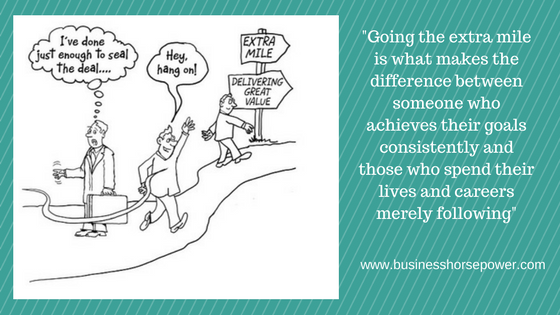
by Julia Felton | Oct 19, 2016
Did you know that going the extra mile is what makes the difference between someone who achieves their goals consistently and those who spend their lives and careers merely following. So why don’t more people go the extra mile and what does the extra mile look like?.
Over the last two weeks I’ve been travelling across Europe and the US and I have literally gone the extra mile. This amount of travelling has been tiring and at times exhausting – especially my whistle stop trip to San Francisco for three days to attend the annual conference of the International Association of Horse Assisted Educators. Has it been inconvenient? Hell yes, but it has also been so rewarding. In San Francisco I was honoured to be able to spend time with the incredible Barbara Rector, who I regard as the pioneer of Horse Assisted Education, as well as other industry trail blazers. It was great to learn from them and have them share their wisdom with us. For me I know that the trip to San Francisco with all the new connections I met and the wisdom I learned will help make an incredible difference to how I achieve my goals over the next year.
During my recent Musketeer Academy I also got to experience the power of going the extra mile in the form of conscious training. We often think that in order to improve in a discipline – whether that is a sport or business – you need to practice, practice, practice. Well nothing can be further from the truth because if we just practice, practice, practice without getting any feedback on how we are performing, it is easy to start developing bad habits. This is why we need to engage in conscious training where we are receiving feedback on how we are doing and so we can re-calibrate our performance and make changes.
It was my Musketeer Sword Master, Jared Kirby, that shared this wisdom with me and on reflection I realize how correct he is. When I was learning the art of fencing it was relatively easy to keep practicing the moves, but unless I really slowed down and actually consciously thought about each movement step by step and engaged in perfect practice I was in fact just going through the motions and not actually training the skills required. Conscious training required us all going the extra mile.
Oftentimes however we don’t go the extra mile because going the extra mile can be inconvenient. It can be exhausting training at fencing for three hours a day just simply to improve a single move and yet I know when I made that commitment of training slow and getting every detail perfect, that in the end the results would be amazing. And they were. Over seven days by slow consistent training and going the extra mile I honed enough skill to be able to participate in a sword fight and storm French castles.
In business going the extra mile involves ensuring we deliver amazing value to our clients. It means exceeding customer expectations and wowing them with great service. Because when we go the extra mile and deliver great value our clients appreciate it and our more likely to want to work with us again and therefore help us achieve our goals and create success.
So are you prepared to go the extra mile to achieve your goals, or are you merely happy to follow others?. Are you prepared to engage in conscious training to improve and get regular feedback so that you can develop, or are you happy going through life just practicing, and missing those nuances that make all the difference? If you are ready to go the extra mile then you need a coach and mentor that can give you quality feedback on how you are performing, so lets connect and explore if I am the right coach for you.

by Julia Felton | Sep 4, 2016
The power of the masterminding can be summed up as “The co-ordination of knowledge and effort of two or more people who work together towards a definite purpose, in the spirit of harmony.”
Masterminding groups have been around since the beginning of humankind. Benjamin Franklin, Thomas Edison and the Greeks all used the same concept but it was not until 1937 that Andrew
Carnegie, then the richest man in the world, commissioned Napoleon Hill to identify the traits of successful businessmen. His conclusions documented in “Think and Grow Rich” revealed that
all had similar thoughts feelings and actions that led to success. Hill also noted that: “No individual may have great power without availing himself of the Master Mind” as “No two minds ever come together without creating a third, invisible mind that moves members to new heights”
In its simplest form masterminding is two people discussing how to solve a problem. Each person has their own ideas, as we all think in different ways, so by combining ideas through brainstorming one person can take another’s idea and give it a slight twist to create a new insight and in turn that can create a new concept. These thoughts would not have existed if they hadn’t been created by the Third Mind in the conversation.
Why Mastermind?
In a mastermind group the agenda belongs to the group and each person’s participation and commitment is key. You will get out what you put in and gain tremendous insights which will improve
your business and personal life. Your mastermind group is like having an objective board of directors, a success team, and a peer advisory group all rolled into one. So if you:
- Feel your business is stuck in a rut
- Lack inspiration to do something new
- Are struggling from lone ranger mentality
- Need an accountability structure
- Want to collaborate with like minded people
then become part of a Mastermind Group where you can learn skills, techniques and get advice to help you get your business moving to the next level
Ever wonder what makes one person successful and one not. It’s not education or hard work. The difference lies in what each person knows and how they use that knowledge and take action
consistently and persistently to improve the business.
Benefits of Being Part of a Mastermind
Key Benefits of participating in a Mastermind Group include:
- Increase your own experience and confidence
- Sharpen your business and personal skills
- Create real progress in your business and your life
- Get honest feedback, advice and brainstorming
- Borrow on the experience and skills of other members
- Create action plans and have the group hold your accountable for fulfilling your plans and goals
- Receive critical insights into yourself
- Optimistic peer support in maintaining a positive mental attitude
- A sense of shared endeavor—there are others out there
I’ve been fortunate to be a part of a number of different mastermind groups over the years and I’ve always found them a very powerful way to help me grow my business. I love the collaborative nature of the group and how when I’m part of a mastermind I no longer feel alone in my business. I feel and know that I have others around me who want my success as much as I do. This supportive environment is very energizing. That’s why shortly I will be launching the Into The Winners Circle Mastermind Group. Its for ambitious women business owners who are sick and tired of doing it by themselves and want to be inspired and supported each and every month by other women who get where they are and who can provide insightful solutions to any challenges you might be experiencing. Plus we’ll be adding a little HorsePower into the mix to really give your business the kick start it deserves.
Just email me to get on the priority notification list so that you get all the details as soon as they are available.

by Julia Felton | Jul 31, 2016
When challenged with having a difficult conversation many people simply do not know how to approach the situation. This is why I have developed a framework that I call the 6 C’s To Successful Courageous Conversations to provide you with a road map for navigating the conversation. Being able to have courageous conversations is a key skill of being a Joined Up Leader and I share more on this in my book The Alchemy Of Change.

Centre
It is key that you stay in charge of yourself, your purpose and your emotional energy throughout any courageous conversation. Breathe, centre and notice when you become off centre and choose to return to centre again.
This is where your power lies. By choosing the calm, centred state, you’ll help the person you are speaking with to be more centred, too. Centring is not a step centring is how you are as you take the steps. Grounded and in the moment.
Step #1: Clarity
Be clear on the reason for the conversation and the outcome that you desire. Most courageous conversations falter because there is a lack of clarity about the real issue. Get to the root cause and focus on this matter rather than the symptoms that might be showing.
Consider how the behaviour you are addressing is impacting the team and the business. Remember this is not about you, so ensure that you control your emotions and approach the conversation in such a way that you do not contaminate it with unconscious feelings or mixed body language. (For most people this means doing some preparation work in anticipation of the courageous conversation).
Step #2: Curiosity
Cultivate an attitude of discovery and curiosity. Pretend you don’t know anything (you really don’t) and learn as much as possible about the other person and their point of view. Pretend you’re entertaining a visitor from another country, and find out how things are for them in that place; how certain events affect the other person, and what their values and priorities are.
Watch for their body language and listen for unspoken energy as well. What do they really want? What are they not saying? Let the person talk until they are finished. Don’t interrupt except to acknowledge. Whatever you hear, don’t take it personally. It’s not really about you. Learn as much as you can in this phase of the conversation. You’ll get your turn, but don’t rush things.
Step #3: Coherent
Coherent means showing that you’ve heard and understood. Try to understand the other person so well you can make their argument for them. Then do it. Repeat back to them what you heard so you can ensure you fully understood what they said. They will not change unless they see that you see where they stand. Acknowledge whatever you can, including your own defensiveness if it comes up. Acknowledgment can be difficult if we associate it with agreement., however keep them separate. Saying, “this sounds really important to you,” doesn’t mean that you’re going to go along with their decision but it does make the other person feel listened to.
Step #4: Congruent
When you sense the other person has said all they want to then, it’s your turn. What can you see from your perspective that they’ve missed? Help clarify your position without minimizing theirs. Seek clarity from the other person on how they came to the conclusion they did. And why that was not what you intended.
Step #5: Co-create Closure
Now you’re ready to begin building a new solution. Brainstorming and continued curiosity and inquiry are really useful here. Ask the other person what they think might work. Whatever they say, find something you like and build on it. If the conversation becomes adversarial, go back to inquiry. Asking for the other’s point of view usually creates a sense of safety and encourages them to engage. If the other person feels they are being listened to and can shape the outcome they are more likely to feel inspired to offer so solutions
I urge you to use this framework for any difficult conversations that you need to have rather than sticking your head in the sand and avoiding the issue and hoping it will go away.
Communication is essential in business and the latest 2015 Employee Engagement Trends Report by Quantum WorkPlace reveals that one of the biggest areas of uncertainty for employees remains the fact that there is not often honest and open communication with managers. So simply by addressing this issue head on, you should start to see trust and employee engagement levels increase.
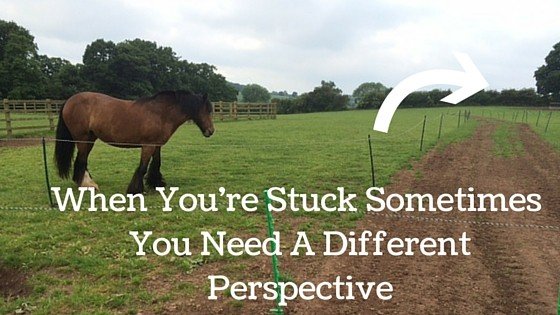
by Julia Felton | Jun 12, 2016
One of the things that I have learnt in business is the value of getting another perspective on a situation. All too often business owners are so stuck in their business and when you are deep in the woods, it is difficult to step back and get an aerial view of what is really going on in your business.
In my book The Alchemy Of Change I likened this situation to being on a ship. When you are stuck under the hatches, below deck you cannot see where you are going and what is coming up on the horizon. Also when you are in this place sometime everything can seem really difficult and yet just one small shift can make all the difference. Jeff Olsen refers to this as the Slight Edge. It is that tiny change that helps everything accelerate to the next level.
This morning my pony Bracken so ably demonstrated this fact that I felt compelled to write about it. You see during the winter the horses field got really wet and so every time the tractor took hay out to the field it left some serious tyre tracks. In some places the ruts were 18 inches deep. So in effect I had a field with these two channels running through the middle of it. Fast forward to last week when finally we were able to roll the field and dig up the tractor ruts and then reseed the field in this area. The result is that there is a strip in the middle of the field which is roped off so the horses can’t walk on it. The challenge is that this means that the horses have to walk around this to get to the gate in order to get out of the field.
So this morning, with a bit of help from me, Charlie, Toby and Thistle figured out they had to follow me up to the top of the field and then walk down to the gate, but bless her, Bracken is all confused. Stuck on the wrong side of the fence she can’t get out. I can see her getting frustrated and annoyed as her friends leave her and yet all she had to do was turn round, walk 100 yards in the other direction and then she could get over to the other side of the seeded grass patch and so join us and come in. But instead of doing this she just stayed there, stuck and getting really frustrated She couldn’t see what was so obvious to everyone else.
So here are the three reasons I learnt from her on why you need a different perspective:
- Stuck in the depth of what was going on Bracken continued to do what she had always done and yet this time she was not getting the results she wanted. She couldn’t get out of the field. And yet in business all too often we can get stuck doing the same thing time and time again and there comes a point where this action is no longer serving us. Bracken needed by different perspective and coaching to show her there was another option.
- Often it is only a minor change that needs to happen to catapult your business to another level. Bracken basically had all the elements in place to get out of the field. She was just approaching the situation in the wrong order. Once she realised that she had to go backwards to go forward then she flew into the new field. And this is also what happens in business. Often we need to take time out to reflect, take stock and re-group before we can move forward.
- Once Bracken had been shown the new way she accelerated with massive momentum towards her goal. And this is what i see happening in business too. Once the business owner has really clarity on where they are going, and is shown a path of how to get there, there business can take off exponentially. Its all about ensuring everything is aligned and then the business will flow effortlessly, much like Bracken when she galloped off to find her friend.
So if you’d like to get a different perspective on where you are in business and how to get to the next level, then please connect with me for a personal strategy consultation where I can help you map out what the problem is and one simple action to can take to get back on track.

by Julia Felton | Jun 9, 2016
A number of people have recently been asking me why I moved to Yorkshire. After all I could have gone to live anywhere and yet Yorkshire became my calling. I’d love to say I had a concrete plan but that is simply not true. I ended up in Yorkshire because the same person’s name came up four times in a row as a place where I could keep my horses. A place that would resonate with my values and that would provide an amazing base for me to run my leadership workshops with horses. And so I listened, came and checked out the place and the rest as they say is history.
The dictionary defines synchronicity as a series of co-incidences and that is certainly what happened to me. I had always loved Yorkshire from a brief time when I worked up here and then every time I visited my friend Sarah-Jane and her family I loved it even more. So when I had the opportunity to relocate Sarah-Jane suggested Yorkshire and I was open to that.
However, it wasn’t just about moving me. In fact that bit was pretty simple. The more complex piece was finding somewhere for four horses, where they could live out all year, but still have some stabling to come in when they wanted. Plus it had to be a venue that was open to my clients coming along and partnering with the horses to develop their leadership skills. My wish list was long and to some degree potentially unbelievable.
I shared with a number of people what I needed and the same name kept coming up. Initially from an old school friend, who I had not seen in 20 years. When I met her at a reunion she immediately thought I was a horse whisperer and asked me if I knew her friend Sarah. I didn’t directly although it turned out Sarah had assessed my videos when I was studying for my Monty Roberts Certificate in Natural Horsemanship some 5 year earlier. Spooky. And then Sarah’s name came up again a couple of times so I felt compelled to come and meet her. It was Christmas 2012 and of all the yards I went to see Sarah’s yard (which is usually full) was the only one that could accommodate all my four horses and was happy for me to work out of her venue. Plus, as anyone who has been to one of my events will know, it is a magical place and their philosophy of horsemanship so resonates with my own.
The thing is that I would never have found this place if I had not be present and open and really listening to what was going on around me. If I had not listened to my intuition I would not have ended up here. And yet this is the perfect place to be.
And if I stop and reflect on my life there have been loads of these co-incidences. What initially appear random events all aligning to show me the path to my success. The challenge is that often we are so embroiled in our day to day activities that we never stop and see the opportunities right before our eyes.
So today, I urge you to slow down, become present and really see what is happening around you, as there are clues everywhere. You just need to look and then join the dots.
I’d love to hear from you on how synchronicity has shaped your destiny and the biggest lessons you have learned. I truly believe that everything is happening for a reason. It is just up to you to listen and the take action.
Have an amazing synchronistic week.















